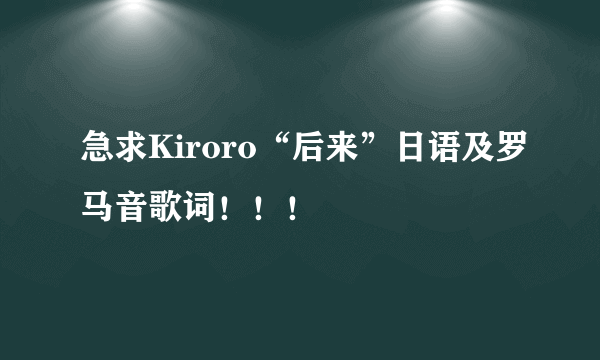Neil Young的详细资料 急求 越详越好
的有关信息介绍如下:
Neil Young http://www.neil-young.com/Neil Young,出生于1945年11月12日的加拿大多伦多。他最早的战斗历史要追溯到五十年代中期的Squires,一支半职业化的乐队。1963年他随Squires乐队一起出现在加拿大民谣乐坛而开始了他的演唱生涯。1964年,他定居纽约,加入Mynah Birds乐队。不久后,因对Mynah Birds成绩感到不满,他和乐队贝司手Bruce Palmer共同前往洛杉矶寻求发展。在洛杉矶,他俩和Stephen Stills成立了被称为当时美国最好的Buffalo Springfield乐队。并取得成功。但乐队的成功导致了一系列危机开始让Neil Young感到厌烦,他于1968年4月退出乐队。Neil Young是唯一可以和Bob Dylan相提并论的民摇艺人,从六十年代末一直到今天,Neil Young从未停止过对摇滚乐的探索,从早期的rockabilly、布鲁斯一直到硬摇滚。但是他最喜爱的还是民摇、乡摇。Neil Young大量的作品影响了几代人,甚至一些丝毫没有创作能力的grunge乐队都乐于自称源于他的影响。在Neil Young进入演绎生涯第四个十年后的今天,他依然保持着旺盛的创作能力。Neil Young的音乐观念核心始终是强烈的独立意识。他近乎心甘情愿地否认期望、潮流以及所谓的趣味。他是个摇滚英雄,但绝不会向名誉和地位低头。他的歌曲个性鲜明或带有浓烈的政治气息。他为自己民谣摇滚和歌手兼词曲作者身份而感到自豪,同时又摒弃他们,不断超越着自己。然而他绝不是传统意义上的折衷主义者。他尽可能地以音乐形式的发展作为自己创作的唯一目的,而不是简单的尝试,这个过程至今仍在持续中。Neil Young什么时候追求什么样的音乐风格从来都是都是无关紧要的。任何音乐都会因为他独特气质的介入而立刻身价倍增,任何一个有他参与的乐队都会成名——Buffalo Springfield、Crazy Horse、Crosby,Stills,Nash And Young。Neil Young风 格:Album Rock(专辑摇滚) Country-Rock(乡村摇滚) Folk-Rock(民谣摇滚) Hard Rock(硬摇滚) Singer/Songwriter(演唱者/歌曲作者)介 绍:一支锈迹斑斑的老枪,一把哀怨苍凉的口琴,一位在世的Grurge“教父”,这就是我们心目中的Neil Young。少有端坐的Neil Young,一脸沉思相,冷酷的墨镜和夹克,似乎很难和他舞台上疯狂拨动吉它的形象相连。不过,这也许正是Neil Young在根源与激进、民谣和朋克之间自如来去的缘由吧!Neil Young既非流落街头的英国老“崩克”,也不像热爱田园的美国乡村大叔,他是位地地道道的多伦多人,加拿大才是他的祖国,虽然他的摇滚生涯是在U. S.A开始。自杀的Kurt Cobain在绝笔书上遗下这么几句歌词:It's better to burn out than tofade away. 这正出自Neil Young那首绝唱“Hey,Hey,My,My(Into the Black)”。每次唱这首歌时,人们会特别注意到Neil Young吉它带上佩着的Jimi Hendrix的襟章,也会记住这首歌两个不同的的面貌:热情倾诉的Acoustic版和粗重、阴沉的电吉它版,它代表了Neil Young真挚动人的别样情怀。回顾Neil Young四十年的音乐旅程,倒是很有一番感触的。五十年代的草创、六十年代的狂飙、七十年代的光荣、八十年代的迷途和九十年代的回归,他个人的这条发展曲线也多多少少浓缩了时势的演进。四十年代来,Neil Young像个辛勤的园丁一样不停滴汗苦作, 但直到Alternative“雄起”的时候他才被人们抬上了台面,冠之以各种美誉,而这对Neil Young只是无足轻重的安慰罢了,因为他根本就是个摇滚变色龙,怎么可能被这种陈词滥调定位呢?Neil Young最早的战斗历史要追溯到五十年代中期的Squires, 一支半职业化的乐队。 少年轻狂的Neil Young从Rock N'Roll中发现了奇迹般的生命力,决心为之献身。那时他受Bob Dylan的民歌感染最深, 1964年的Mynad Birds才是一支以R&B为基础的摇滚乐队,不过坚持的光景却不长,固执的Neil Young又邀来三五好友,成立了被称为当时美国最好的Buffalo Springfield, 狂热的崇拜者紧追不舍,毒品也慢慢渗透他们的生活,于是Neil Young又毅然抛弃短暂的热闹,悄悄独闯上路。1969年,他的第一张纯个人大碟在万众惊诧中面世了,他选择了完全与过去背叛的道路,这是一张极具多样和古典的唱片, 人们无法预测Neil Young的下一步会怎么样。 结果是,他又将一支名叫Rocket的乐队改头换面, 这就是后来追随他多年风雨同舟的Crazy Horse,Neil Young此后的音乐无论怎么变, Crazy Horse总会不时安分的出现。 从第一张 《EverybodyKnows This Is Nowhere》开始,Neil Young凭Crazy Horse出众的乐器驾驭力,不断寻求新的突破。70年代十分值得人们纪念,Neil Young在其中也留下了不灭的痕迹。Jimi Hendrix、Janis Joplin、The doors、Traffic、King Crimson都在那时候走出来,而Neil Young除了与Crazy Horse即兴合作外,还续写了一个Crosby、Still、Nash & Young的神话时代, 那也是一个不折不扣的民歌乐队。 不过令人难以置信的是, 直到1988年, NeilYoung才有机会与Stephen Stills、David Crosby、Graham Nash几位老队员聚在一起,灌录了他们的第一张录音室大碟。相反,Neil Young的个人选集倒是一张紧接一张。其中, 《After the Gold Rush》恰如标题预示的那样,正是Neil Young在金光下奋勇前冲的剪影, 和着悦耳动听的乡村和民谣旋律, 他轻松咂弄着忧伤。 多年以后, S. TEtienne和Everything But the Girl都相继翻唱了其中的作品,由此可见它多么的深入人心。《Harvest》也是他最为重要的一张作品,好多歌都流传至今,在“Alabama”中他唱道: “I come to you and see all this ruin,what are you doing Alabama?You got the rest of the union to help you along, what's going wrong? ”《Harves》的巨大胜利后,人们都等待Neil Young再炮制一张类似的专辑,但这次他们又跌得好痛。 Neil Young置轻车熟路的成功模式不顾, 重新召集了一批独特的乐手,《Tonight's the Night》 展示了他全新的风貌:黑暗、痛苦的氛围,远离主流的听觉冲击。原来拿着吉它唱民歌的Young也可以如此野性!1979年,深受Sex Pistols的影响,《Rust Never Sleeps》 充斥了粗糙、激烈的朋克乐风,他招牌式的“Hey,Hey,My,My”就出自那时。八十年代,Neil Young一直在蜕变中沉浮、迷失,这其中他玩过很老式的50年代摇滚、乡村、布鲁斯,也跟过摩登的New Wave风尚。喜欢他的听众觉得Neil Young变了。不再是昔日眼中的英雄,而乐评界也有不少冷言冷语。Neil Young对此依然故我,并称绝不与扼杀创意的时代妥协。 不过, 到1989年, 他终于还是来了一次大的回归,《Freedom》帮他找到了自我与大众都能接受的结合点。1990年, Neil Young与冷落多时的Crazy Horse复合,《Ragged Glory》重性的车库摇滚正迎合即将兴起的Grunge潮起,Neil Young顺势东山再起,并被后辈推为Grunge之父。 1992年, 他凭 《Harvest Moon》 重拾了 《Harvest》 当年的质朴情怀, 而《Mirror Ball》专辑中,他干脆便召来Grunge大牌乐队Pearl Jam为他伴奏,彻彻底底的Grunge了一回。其实,他只不过是将七十年代的把老枪擦亮后再重新拿出来用罢了!为电影《Dead Man Walking》 作完Ambient和实验色彩的配乐后,Neil Young今年与Crazy Horse继续携手, 推出了他第43张专辑《Broken Arrow》。这次,他侧重电吉它、Jazz和鼓的互Jam, 唱得较少, 而清淡的民谣味和浓重的摇滚声融合得如此赏心悦目。多首长达近十分钟的即兴曲目,也一再显示了他坚守七十年代摇滚的本色和实力。Neil Young一贯都有些抚慰人心的慢板感性作品,这次也不例外,“Music Arcude”空心吉它奏出的空灵味相信你我都意绪难平的。 他还再度演绎了Jimmy Reed 61年的经典作品“Buy what you want me to be” ,不过不再是猫王当年的那种“姣”音,即兴与蓝调味十足,就像坐在Pub中听歌一样。对很多人来说,Neil Young的声音并不好听,很高亢甚至有些刺耳,而在我却是直入心灵的一枪。他的歌不乏社会写实,只不过更多的时候热情代替了愤怒,倾诉换取了控诉,但他这把不服老的摇滚老枪却永远火爆十足。出生时间: 1945年国 籍:加拿大专 辑:Are You Passionate?、Silver & Gold、Road Rock-Vol. 1、Lucky Thirteen、Year Of The Horse、Landing On Water、Mirror Ball、Unplugged等。Neil YoungAfter Neil Young left the Californian folk-rock band Buffalo Springfield in 1968, he slowly established himself as one of the most influential and idiosyncratic singer-songwriters of his generation. Young's body of work ranks second only to Bob Dylan in terms of depth, and he was able to sustain his critical reputation, as well as record sales, for a longer period of time than Dylan, partially because of his willfully perverse work ethic. From the beginning of his solo career in the late '60s until the late '90s, he never stopped writing, recording and performing; his official catalog only represented a portion of his work, since he kept countless tapes of unreleased songs in his vaults. Just as importantly, Young continually explored new musical territory, from rockabilly and the blues to electronic music. But these stylistic exercises only gained depth when compared to his two primary styles -- gentle folk and country-rock, and crushingly loud electric guitar rock, which he frequently recorded with the Californian garage band Crazy Horse. Throughout his career, Young alternated between these two extremes, and both proved equally influential; there were just as many simpy singer-songwriters as there were grunge and country-rock bands claiming to be influenced by Neil Young. Despite his enormous catalog and influence, Young continued to move forward, writing new songs and exploring new music in his fourth decade as a performing artist. That restless spirit ensured that he was one of the few rock veterans as vital in his old age as he was in his youth.Born in Toronto, Canada, Neil Young moved to Winnipeg with his mother following her divorce from his sports-journalist father. Young began playing music in high school. Not only did he play in garage-rock outfits like the Esquires, but he also played in local folk clubs and coffeehouses, where he eventually met Joni Mitchell and Stephen Stills. During the mid-'60s, he returned to Toronto, where he played as a solo folk act. By 1966, he joined the Mynah Birds, which also featured bassist Bruce Palmer and Rick James. The group recorded a couple of singles for Motown, which were ignored. Frustrated by his lack of success, Young moved to Los Angeles in his Pontiac hearse, taking Palmer along as support. Shortly after they arrived in L.A., they happened to meet Stills, and they formed Buffalo Springfield, who quickly became one of the leaders of the Californian folk-rock scene. Despite the success of Buffalo Springfield, the group was plagued with tension, and Young quit the band several times before finally leaving to become a solo artist in May of 1968. Hiring Elliot Roberts as his manager, Young signed with Reprise Records and released his eponymous debut album in early 1969. By the time the album was released, he had begun playing with a local band called the Rockets, which featured guitarist Danny Whitten, bassist Billy Talbot and drummer Ralph Molina. Young renamed the group Crazy Horse and had them support him on his second album, Everybody Knows This Is Nowhere, which was recorded in just two weeks. Featuring such Young staples as "Cinnamon Girl" and "Down By the River," the album went gold. Following the completion of the record, he began jamming with Crosby, Stills and Nash, eventually joining the group for their spring 1970 album, Deja Vu. Although he was now part of Crosby, Stills and Nash, Young continued to record as a solo artist, releasing After the Gold Rush at the end of the year. After the Gold Rush, with its accompanying single "Only Love Can Break Your Heart," established Young as a solo star, and fame only increased through his association with CSN&Y.Although Crosby, Stills, Nash and Young were a very successful act, they were also volatile, and they had split by the spring 1971 release of the live Four Way Street. The following year, Young had his first number one album with the mellow country-rock of Harvest, which also featured his first (and only) number one single, "Heart of Gold." Instead of embracing his success, he spurned it, following it with the noisy, bleak live film Journey Through the Past. Both the movie and the soundtrack received terrible reviews, as did the live album Time Fades Away, a record recorded with the Stray Gators that was released in 1973.Both Journey through the Past and Time Fades Away signaled that Young was entering a dark period in his life, but they only scratched the surface of his anguish. Inspired by the overdose deaths of Danny Whitten in 1972 and his roadie Bruce Berry the following year, Young wrote and recorded the bleak, druggy Tonight's the Night late in 1973, but declined to release it at the time. Instead, he released On the Beach, which was nearly as harrowing, in 1974; Tonight's the Night finally appeared in the spring of 1975. By the time of its release, Young had recovered, as indicated by the record's hard-rocking follow-up Zuma, an album recorded with Crazy Horse and released later that year.Young's focus began to wander in 1976, as he recorded the duet album Long May You Run with Stephen Stills and then abandoned his partner midway through the supporting tour. The following year he recorded the country-rock-oriented American Stars 'N Bars, which featured vocals by Nicolette Larson, who was also prominent on 1978's Comes a Time. Prior to the release of Comes a Time, Young scrapped the country-rock album Homegrown and assembled the triple-album retrospective Decade. At the end of 1978, he embarked on an arena tour called Rust Never Sleeps, which was designed as a showcase for new songs. Half of the concert featured Young solo, the other half featured him with Crazy Horse. That was the pattern that Rust Never Sleeps, released in the summer of 1979, followed. The record was hailed as a comeback, proving that Young was one of the few rock veterans who attacked punk rock head-on. That fall he released the double album Live Rust and the live movie Rust Never Sleeps.Rust Never Sleeps had restored Young to his past glory, but he perversely decided to trash his goodwill in 1980 with Hawks & Doves, a collection of acoustic songs that bore the influence of conservative, right-wing politics. In 1981, Young released the heavy rock album Re*Ac*tor, which received poor reviews. Following its release, he left Reprise for the fledgling Geffen Records, where he was promised lots of money and artistic freedom. Young decided to push his Geffen contract to the limit, releasing the electronic Trans, where his voice was recorded through a computerized vocoder, later that year. The album and its accompanying, technology-dependent tour were received with bewildered, negative reviews. The rockabilly of Everybody's Rockin' (1983) was equally scorned, and Young soon settled into a cult audience for the mid-'80s.Over the course of the mid-'80s, Young released three albums that were all stylistic exercises. In 1985, he released the straight country Old Ways, which was followed by the new wave-tinged Landing on Water the following year. He returned to Crazy Horse for 1987's Life, but by that time, he and Geffen had grown sick of each other, and he returned to Reprise in 1988. His first album for Reprise was the bluesy, horn-driven This Note's for You, which was supported by an acclaimed video that satirized rock stars endorsing commercial products. At the end of the year, he recorded a reunion album with Crosby, Stills and Nash called American Dream, which was greeted with savagely negative reviews.Ameican Dream didn't prepare any observer for the critical and commercial success of 1989's Freedom, which found Young following the half-acoustic/half-electric blueprint of Rust Never Sleeps to fine results. Around the time of its release, Young became a hip name to drop in indie rock circles, and he was the subject of a tribute record title The Bridge in 1989. The following year, Young reunited with Crazy Horse for Ragged Glory, a loud, feedback-drenched album that received his strongest reviews since the '70s. For the supporting tour, Young hired the avant-rock band Sonic Youth as his opening group, providing them with needed exposure while earning him hip credibility within alternative rock scenes. On the advice of Sonic Youth, Young added the noise collage EP Arc as a bonus to his 1991 live album, Weld.Weld and the Sonic Youth tour helped position Neil Young as an alternative and grunge rock forefather, but he decided to abandon loud music for its 1992 followup, Harvest Moon. An explicit sequel to his 1972 breakthrough, Harvest Moon became Young's biggest hit in years, and he supported the record with an appearance on MTV Unplugged, which was released the following year as an album. Also in 1993, Geffen released the rarities collection Lucky Thirteen. The following year, he released Sleeps with Angels, which was hailed as a masterpiece in some quarters. Following its release, Young began jamming with Pearl Jam, eventually recording an album with the Seattle band in early 1995. The resulting record, Mirror Ball, was released to positive reviews in the summer of 1995, but it wasn't the commercial blockbuster it was expected to be; due to legal reasons, Pearl Jam's name was not allowed to be featured on the cover.In the summer of 1996, he reunited with Crazy Horse for Broken Arrow and supported it with a brief tour. That tour was documented in Jim Jarmusch's 1997 film The Year of the Horse, which was accompanied by a double-disc live album. In 1999, Young reunited with Crosby, Stills and Nash for the first time in a decade, supporting their Looking Forward LP with the supergroup's first tour in a quarter century. A new solo effort, Silver and Gold, followed in the spring of 2000. In recognition of his 2000 summer tour, Young released the live album Road Rock - Vol. 1 the following fall, showcasing a spectacular two night account of Young's performance at the Red Rocks Amphitheater in Morrison, Colorado in September 2000. A DVD version titled Red Rocks Live was issued that December, including 12 tracks initially unavailable on Road Rock -- Vol. 1. --Stephen Thomas Erlewine



